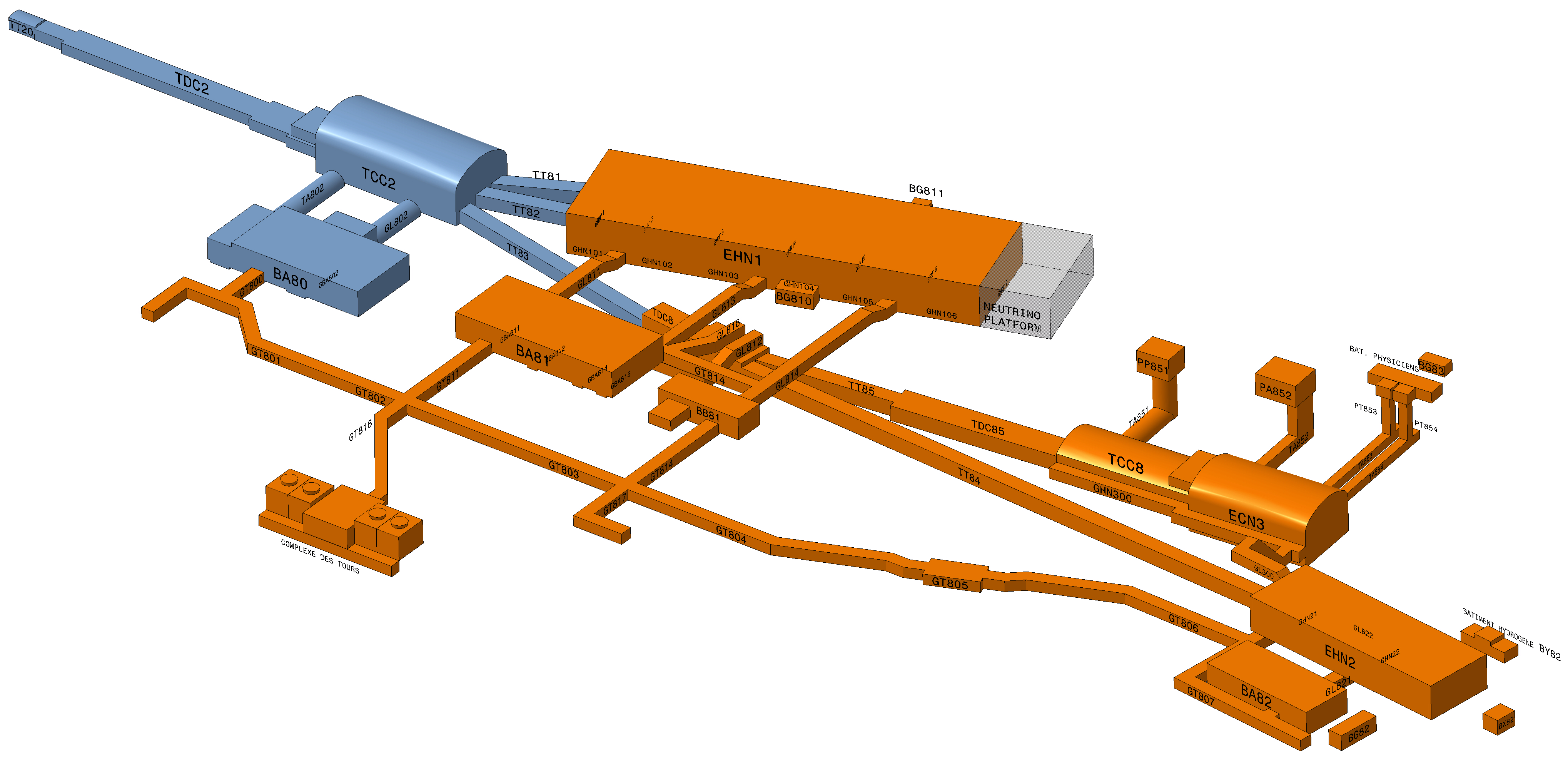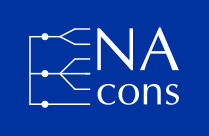
The North Area
The North Area (NA) was built in the 1970s at the CERN Prévessin site. It consists of a complex of three experimental halls, service buildings and underground tunnels and comprises approximately 7 km of beam lines. The total surface area of the NA installations reaches 60.000 m2. The North Area provides particle beams of a wide energy range and particle types for fixed target experiments and R&D test beam programs for collaborations. The North Area, due to its unique characteristics remains the only place in the world where such physics studies can be performed.
During the past five decades, the North Area has been one of the most intensively requested experimental areas of CERN, thanks to the unique characteristics of its beam lines in terms of energy reach, particle type and flexibility. Demands for beam time are steadily increasing and therefore the yearly available beam time is usually overbooked, typically by short-term, small collaborations. To deal with increased demand, tests are often scheduled in parallel to serve more than one experiment in the same experimental zone or spread over the several zones in the same beam line.
Reasearch in the North Area
The North Area hosts a wide variety of experiments, ranging from tests for R&D or detector validation purposes (for the LHC and future colliders like FCC as well as for CERN and for other laboratories), to several fixed target experiments with long term plans and innovative projects such as the Neutrino Platform. The strong solicitation of the area along with the versatility of projects it hosts guarantees the long-term future of the NA.
The North Area is also a key player in the Physics Beyond Colliders (PBC) project, which aims at exploring the opportunities offered by the CERN accelerator complex and infrastructure for a competitive physics program up to 2040. The purpose of PBC is to gain new insights into some of today's outstanding questions in particle physics through projects complementary to high-energy colliders and other initiatives around the globe. The focus is on fundamental physics questions that are similar in spirit to those addressed by high-energy colliders, but that may require different types of beams and experiments, e.g. at the high-intensity frontier.


Objectives and Scope
The North Area Consolidation project (NA-CONS) aims to enhance the reliability, safety, and scientific capabilities of the North Area. The project encompasses a wide range of activities, including:
-
Infrastructure Upgrades: This involves improving the existing buildings, utilities, and support structures to meet modern standards and ensure they can support future experiments.
-
Beamline Improvements: The beamlines, which transport particles from the Super Proton Synchotron (SPS) to various experimental areas, are being upgraded for better precision and reliability. This includes the installation of new magnets, power supplies, and control systems.
-
Safety Enhancements: Ensuring the highest safety standards is critical. The NA-CONS project includes updating radiation shielding, fire detection and suppression systems, and access control.
-
Scientific Equipment Modernization: Many experiments in the North Area rely on cutting-edge detectors and other scientific instruments. The NA-CONS project facilitates the installation and maintenance of these advanced tools.
